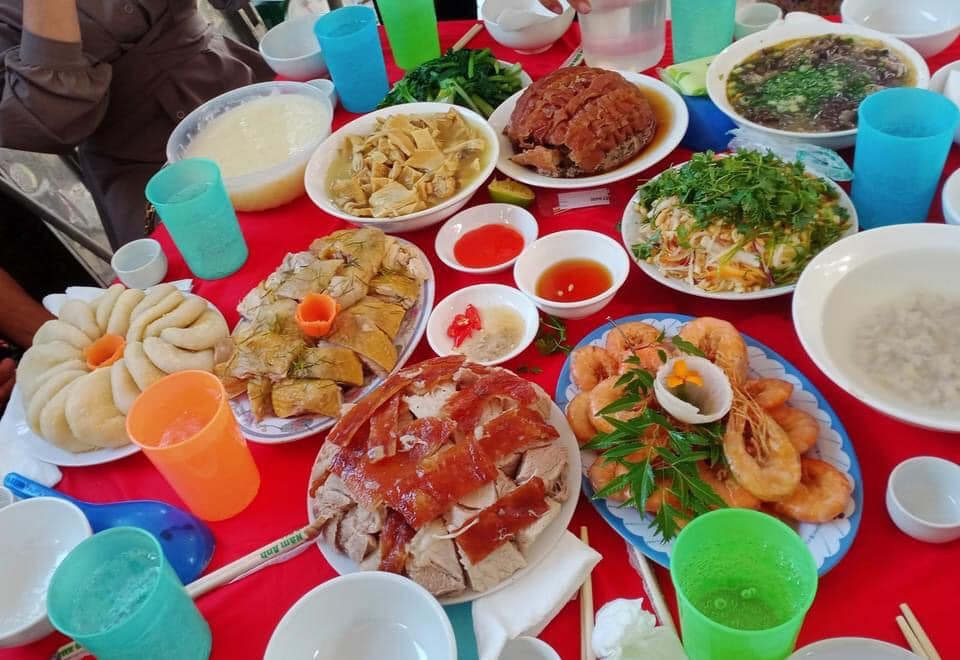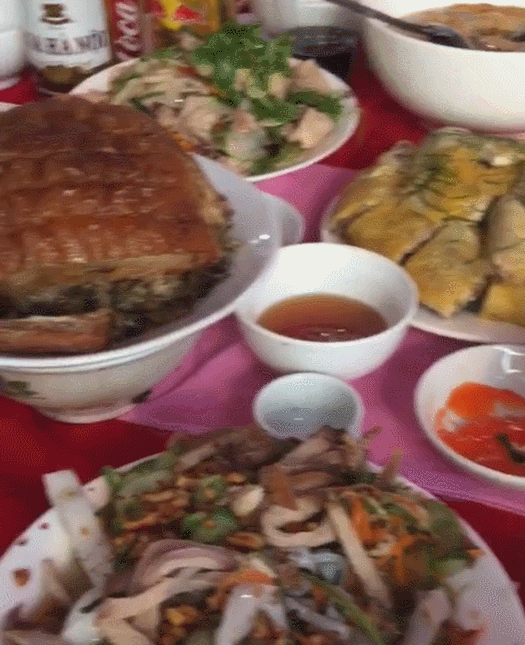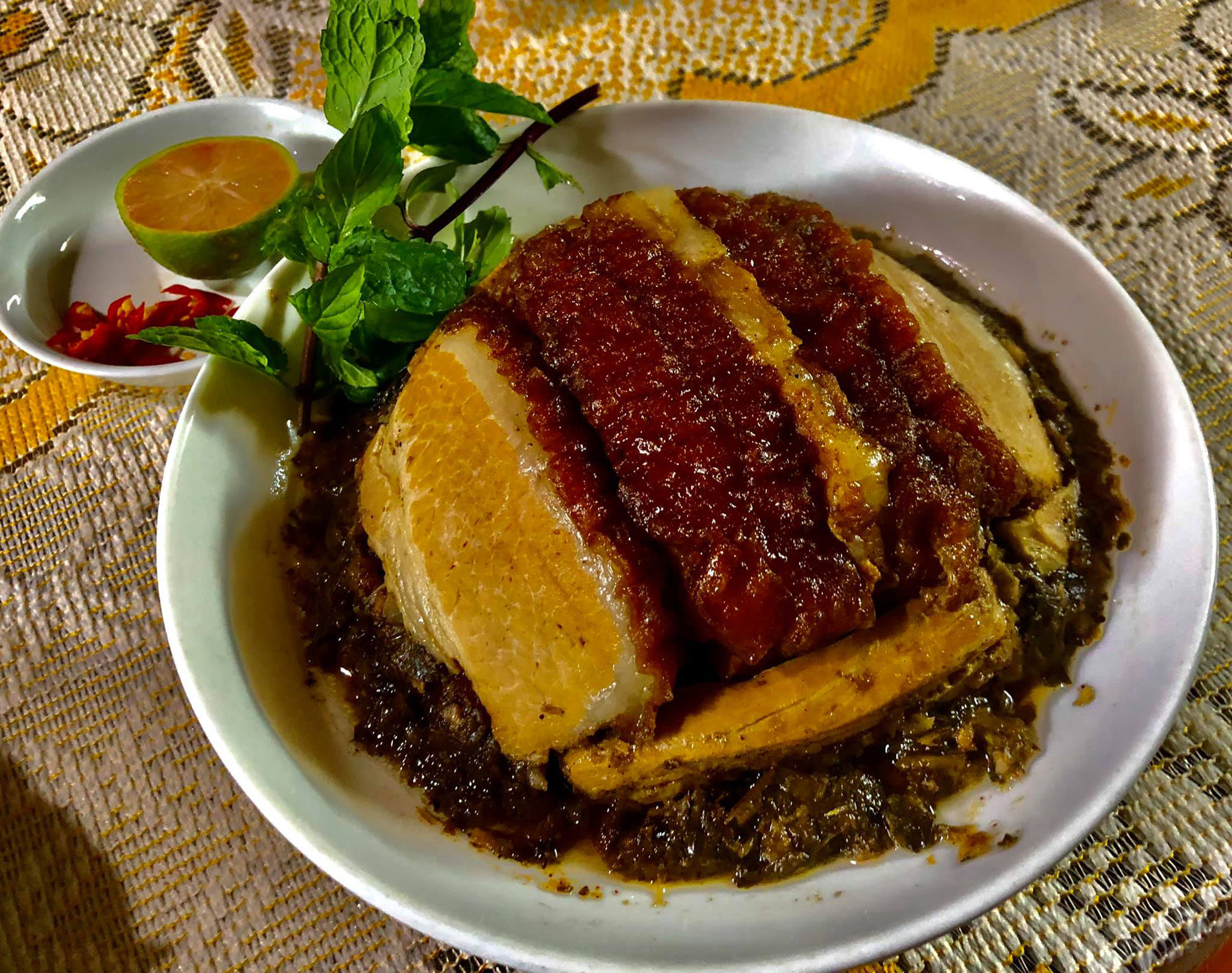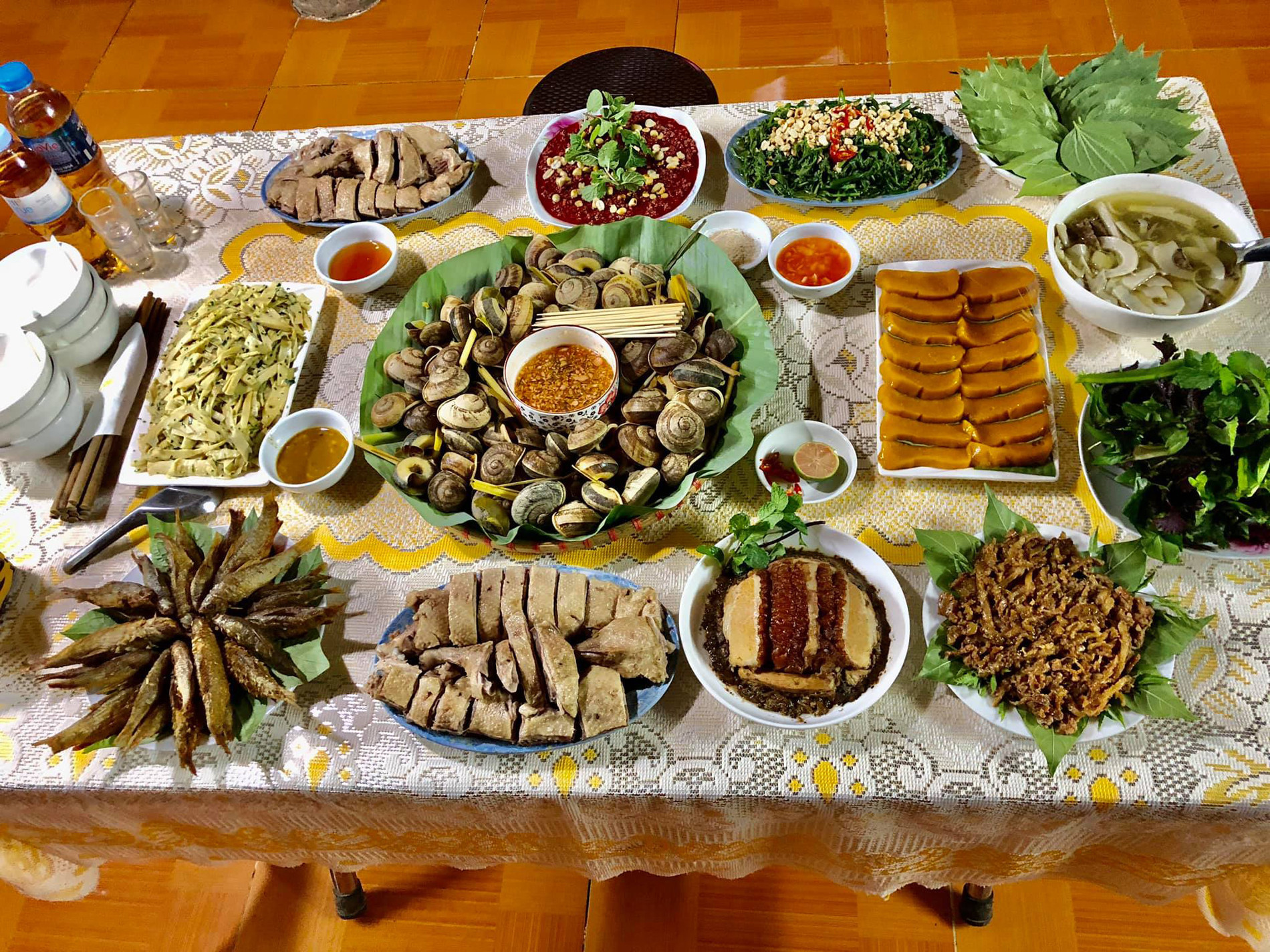Known for its unusual name and eye-catching appearance, one particular specialty dish is a staple on ceremonial tables across Lang Son, cherished for its rich, distinctive flavor and meticulous preparation.
In this northern province, aside from the famed roasted pork, khau nhuc is another must-have dish served during weddings, ancestral commemorations, festivals, and Tet holidays.
Khau nhuc (also spelled khâu nhục or nằm khâu) originated in Guangdong, China, and was introduced to Vietnam long ago. Today, it is considered a signature dish in northern provinces like Lang Son and Quang Ninh.
The name comes from a Sino-Vietnamese phrase, where “khau” means “steamed until tender,” and “nhuc” means “meat.” Thus, khau nhuc refers to pork that is steamed to a melt-in-the-mouth softness. It is also said to resemble a small hill when plated, hence the word “khau,” meaning hill in the Nung ethnic language.
Linh Kim Chi, owner of a ceremonial catering service in Huu Lung (Lang Son) with over a decade of experience, shared that a feast for six people typically costs between 1.6 million to 2 million VND (USD 63–78).
The standard menu includes seven main dishes, always featuring roasted pork and khau nhuc, alongside boiled chicken, fried shrimp, sautéed buffalo or squid, pork sausage, sticky rice with shredded pork, salad, boiled vegetables, and soup.
“At our place, we usually serve khau nhuc in two portion sizes - either six or eight slices per bowl, with each bowl weighing 650–700 grams. One bowl per table,” Chi explained.
The dish is primarily made with pork belly, which must be fresh, traceable, and hygienic. The ideal cut has three distinct meat layers - neither too lean nor too fatty.
The pork is first cleaned and boiled whole to firm up the texture and remove impurities. After boiling, the skin is pricked with a sharp-pointed tool and rubbed with salt. The pork is then deep-fried until golden and crisp. Some families also coat the skin in honey before frying, giving the pork a shiny glaze and sweet aroma.
After frying, the pork is soaked in hot water to soften the skin again, cooled, and then cut into portions.
The stuffing plays a vital role in flavor. It includes local Lang Son ingredients like tau soi (fermented greens), garlic, shallots, mac mat leaves, dia lien (long pepper), phui nhuoi (tofu), preserved lemon, and black cardamom. These are finely chopped and mixed with soy sauce, then used to marinate the pork for 30 minutes.
The pork slices are then arranged in bowls and covered with the stuffing mixture before being steamed for 4–5 hours until soft and aromatic.
When served, the bowl is inverted onto a deep plate or large bowl, forming a hill-shaped mound of glistening pork - a visual symbol of abundance.
Thanh Thuy, a Hanoi resident who has attended weddings in Lang Son, recalled being surprised by the flavor.
“At first glance, I thought it would be too greasy. But after tasting, I was impressed - it’s rich, tender, and has a distinct aroma. The seasoning underneath balances out the fattiness,” she said.
Since the dish includes broth and is best served hot, it’s usually eaten right away, not taken home like dry foods.


 |
 |
 |
 |
 |


Khau nhuc symbolizes prosperity and fullness in festive feasts. Photo: Le Trieu Duong